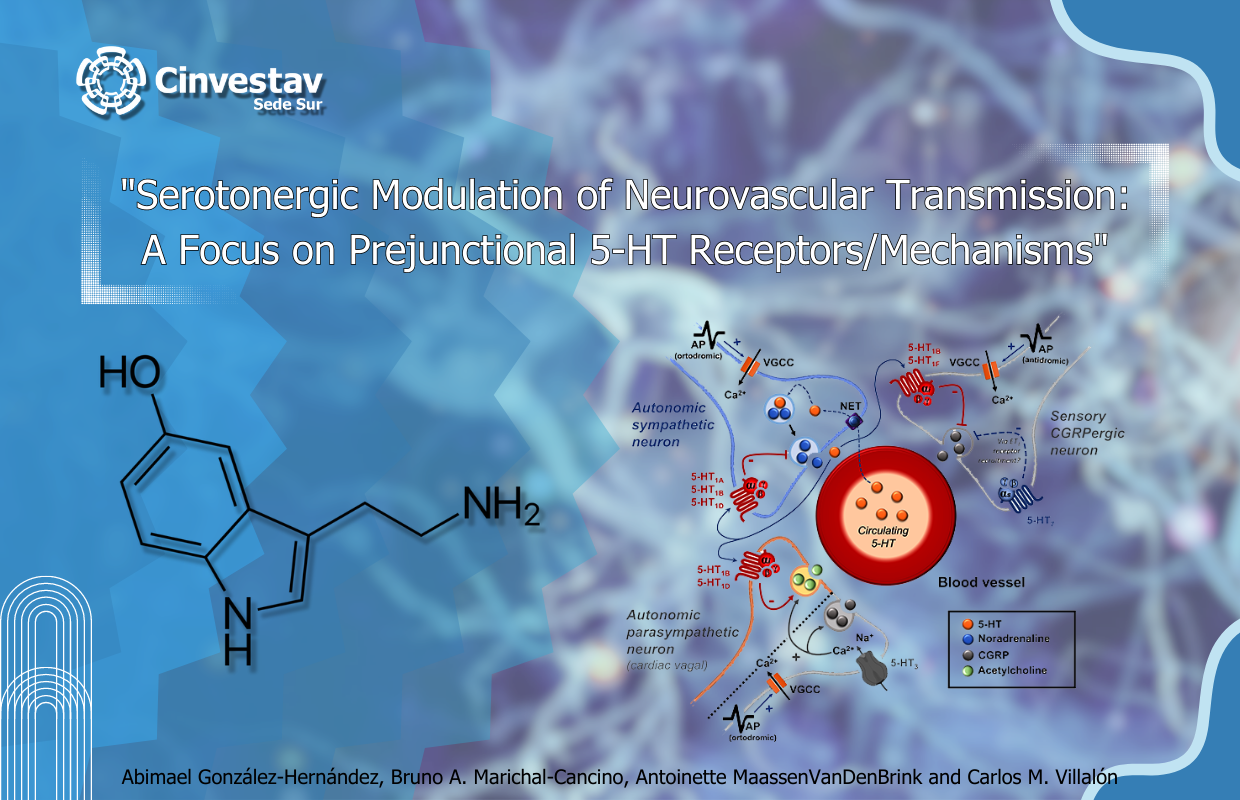Carlos M. Villalón - Serotonergic Modulation of Neurovascular Transmission: A Focus on Prejunctional 5-HT Receptors/Mechanisms.

29 de junio del 2023
Invitamos a leer el artículo: "Serotonergic Modulation of Neurovascular Transmission: A Focus on Prejunctional 5-HT Receptors/Mechanisms".
Autores: Abimael González-Hernández, Bruno A. Marichal-Cancino, Antoinette MaassenVanDenBrink y Carlos M. Villalón.
Abstract: 5-Hydroxytryptamine (5-HT), or serotonin, plays a crucial role as a neuromodulator and/or neurotransmitter of several nervous system functions. Its actions are complex, and depend on multiple factors, including the type of effector or receptor activated. Briefly, 5-HT can activate: (i) metabotropic (G-protein-coupled) receptors to promote inhibition (5-HT1 , 5-HT5 ) or activation (5-HT4 , 5-HT6 , 5-HT7 ) of adenylate cyclase, as well as activation (5-HT2 ) of phospholipase C; and (ii) ionotropic receptor (5-HT3 ), a ligand-gated Na+/K+ channel. Regarding blood pressure regulation (and beyond the intricacy of central 5-HT effects), this monoamine also exerts direct postjunctional (on vascular smooth muscle and endothelium) or indirect prejunctional (on autonomic and sensory perivascular nerves) effects. At the prejunctional level, 5-HT can facilitate or preclude the release of autonomic (e.g., noradrenaline and acetylcholine) or sensory (e.g., calcitonin gene-related peptide) neurotransmitters facilitating hypertensive or hypotensive effects. Hence, we cannot formulate a specific impact of 5-HT on blood pressure level, since an increase or decrease in neurotransmitter release would be favoured, depending on the type of prejunctional receptor involved. This review summarizes and discusses the current knowledge on the prejunctional mechanisms involved in blood pressure regulation by 5-HT and its impact on some vascular-related diseases.
Keywords: serotonin, CGRP, blood pressure, migraine, hypertension.